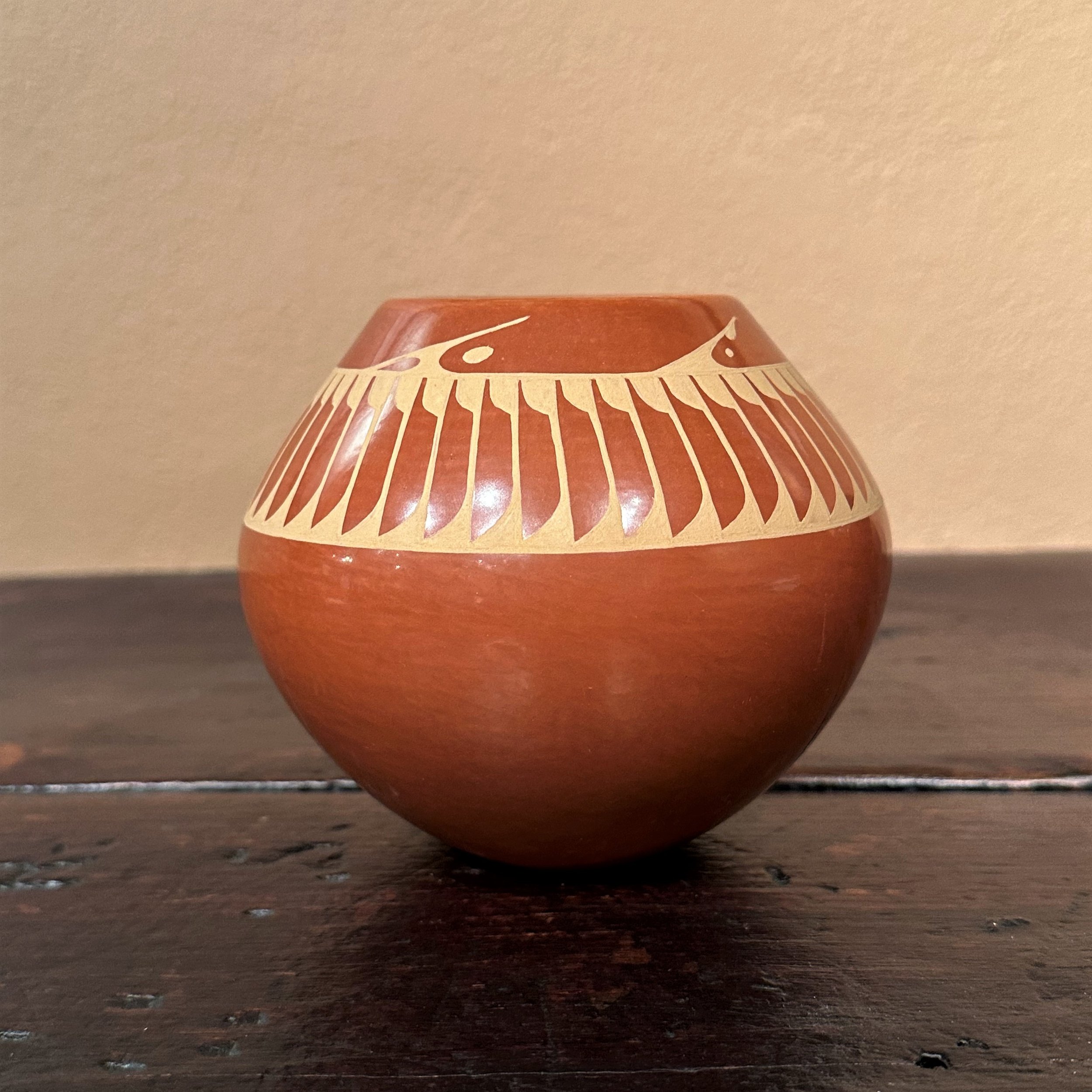We talk a lot about our paintings and bronzes, but Nedra Matteucci Galleries is also home to countless pieces of Native American pottery, each with its own age-old technique and cultural tradition behind it. It’s an honor to represent these Native Southwestern artists and continue to bring their craftsmanship to new generations.
Acoma Pueblo
The Acoma Pueblo is famous for its vibrantly decorated pottery, usually seen in orange and tan with geometric motifs that represent nature. The pots typically have thin walls, fine lines and eye-catching designs.
Originally, the pottery was produced for practical purposes, such as water jugs for long hunts, seed jars for storing seeds to plant in growing season, and a variety of other uses.
Today, they’re valued not only as the stunning art pieces they are, but as vessels of cultural memory and preservation. The following examples are just a few of the incredible Acoma pots currently available in the gallery.
Barbara Cerno & Joseph Cerno, Sr. - Acoma Polychrome Pot, 10 x 12”











